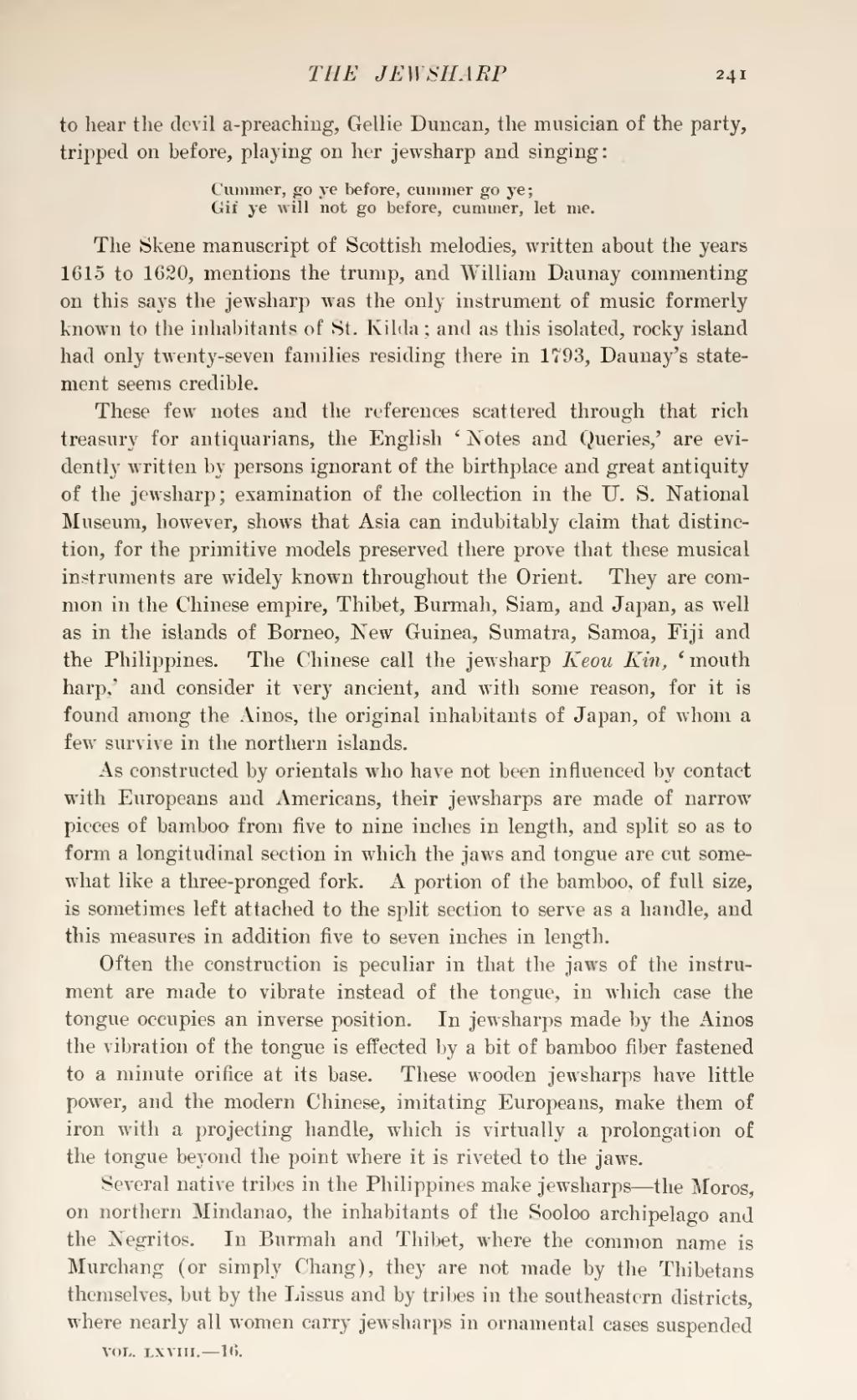to hear the devil a-preaching, Gellie Duncan, the musician of the party, tripped on before, playing on her jewsharp and singing:
Cummer, go ye before, cummer go ye;
Gif ye will not go before, cummer, let me.
The Skene manuscript of Scottish melodies, written about the years 1615 to 1620, mentions the trump, and William Daunay commenting on this says the jewsharp was the only instrument of music formerly known to the inhabitants of St. Kilda; and as this isolated, rocky island had only twenty-seven families residing there in 1793, Daunay's statement seems credible.
These few notes and the references scattered through that rich treasury for antiquarians, the English 'Notes and Queries,' are evidently written by persons ignorant of the birthplace and great antiquity of the jewsharp; examination of the collection in the U. S. National Museum, however, shows that Asia can indubitably claim that distinction, for the primitive models preserved there prove that these musical instruments are widely known throughout the Orient. They are common in the Chinese empire, Thibet, Burmah, Siam, and Japan, as well as in the islands of Borneo, New Guinea, Sumatra, Samoa, Fiji and the Philippines. The Chinese call the jewsharp Keou Kin, 'mouth harp,' and consider it very ancient, and with some reason, for it is found among the Ainos, the original inhabitants of Japan, of whom a few survive in the northern islands.
As constructed by orientals who have not been influenced by contact with Europeans and Americans, their jewsharps are made of narrow pieces of bamboo from five to nine inches in length, and split so as to form a longitudinal section in which the jaws and tongue are cut somewhat like a three-pronged fork. A portion of the bamboo, of full size, is sometimes left attached to the split section to serve as a handle, and this measures in addition five to seven inches in length.
Often the construction is peculiar in that the jaws of the instrument are made to vibrate instead of the tongue, in which case the tongue occupies an inverse position. In jewsharps made by the Ainos the vibration of the tongue is effected by a bit of bamboo fiber fastened to a minute orifice at its base. These wooden jewsharps have little power, and the modern Chinese, imitating Europeans, make them of iron with a projecting handle, which is virtually a prolongation of the tongue beyond the point where it is riveted to the jaws.
Several native tribes in the Philippines make jewsharps—the Moros, on northern Mindanao, the inhabitants of the Sooloo archipelago and the Negritos. In Burmah and Thibet, where the common name is Murchang (or simply Chang), they are not made by the Thibetans themselves, but by the Lissus and by tribes in the southeastern districts, where nearly all women carry jewsharps in ornamental cases suspended
